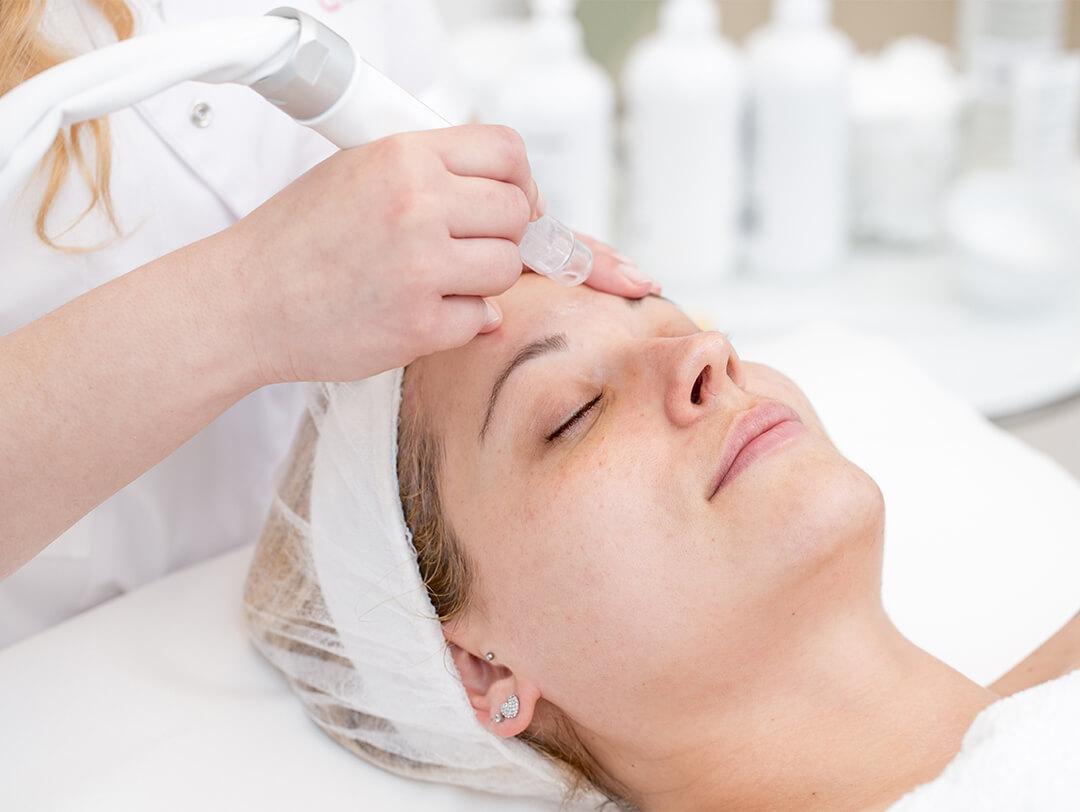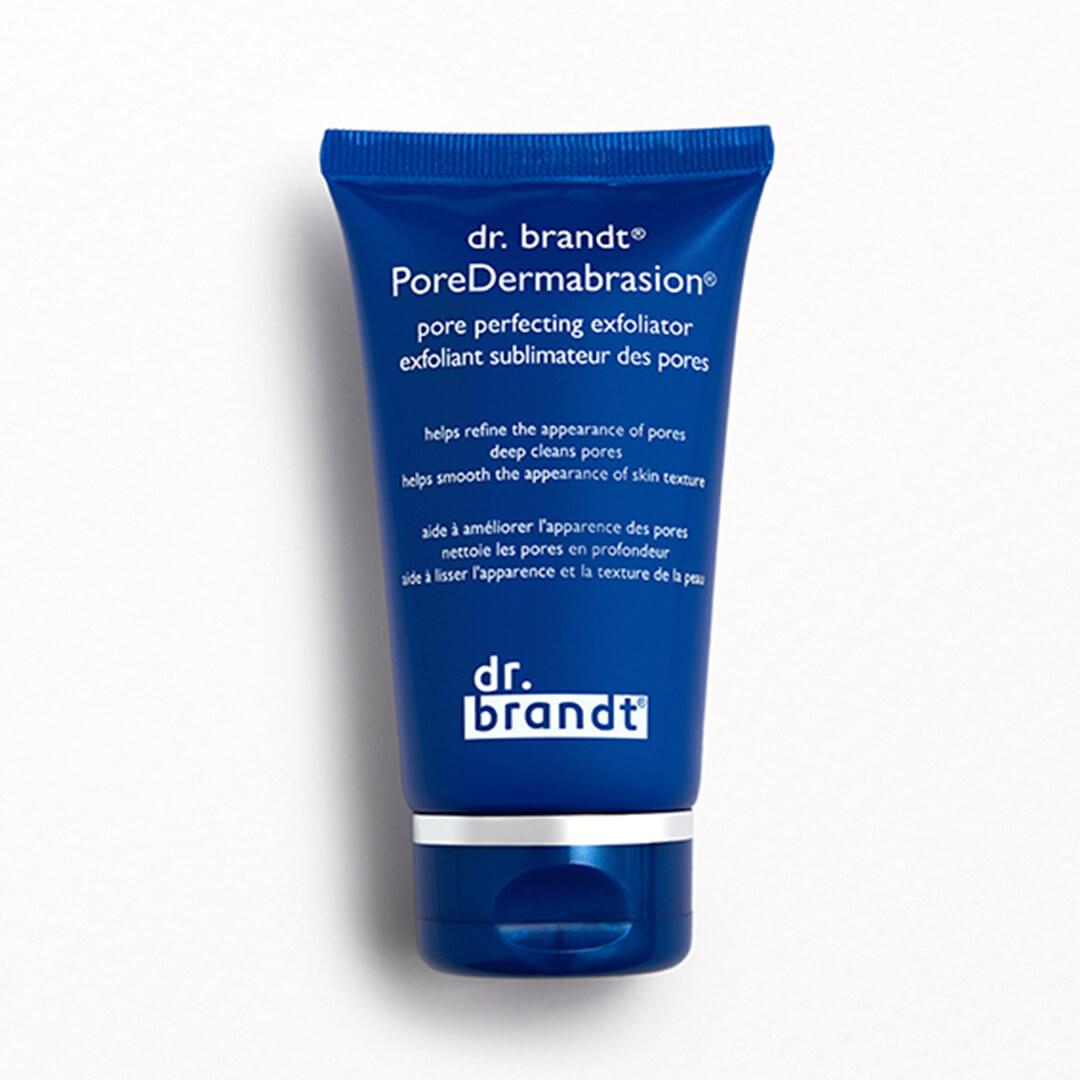Everything You Need to Know About Microdermabrasion



Lindy Segal


We all have steps we love in our skincare routine, from refreshing cleansers that take the day away to soothing face oils before bed. But when it comes to keeping our skin clear, glowy, and bright, there’s one step that rules them all: Exfoliation. And when our skin needs an extra boost to refresh and reset, we turn to the mother of all exfoliating treatments—microdermabrasion. Not only does microdermabrasion keep the top layer of your skin soft and smooth, but when done properly by a professional, it can help treat multiple skin concerns. This ultra-popular, ultra-effective treatment can do what physical and chemical exfoliants and home treatments aren’t quite able to accomplish, like help fade fine lines and acne scars, treat hyperpigmentation and age spots, and even clear away blackheads. Sounds like microdermabrasion is everything your skin has been wanting and more, right? Before you book an appointment, there are a few basics to know first.
To break down everything there is to know about microdermabrasion, we went straight to the sources: Simon Ourian, MD of Epione in Beverly Hills—who you’ve probably spotted on Instagram with, oh, every Kardashian (and just about every other A-lister in Hollywood), and licensed esthetician Ava Lemons, LE who practices at one of our favorite spots for customized facials, Heyday Skincare. Read on to learn all things how microdermabrasion works from the procedure itself to potential side effects, and what it can really do for your skin.


It's about glam time you treated yourself.
MEET THE EXPERT
Simon Ourian, M.D is owner of Epione, a cosmetic center for laser and aesthetic surgery in Beverly Hills, California. He is credited with developing the Coolaser and Coolbeam procedures and his clients include Hollywood stars and A-listers.
Ava Lemons, LE is a licensed esthetician at Heyday Skincare with over 16 years of experience specializing in facials and skincare.
So, what is microdermabrasion?
Simply put, microdermabrasion is exfoliation—taken to the next level. “Microdermabrasion is a type of skin rejuvenation meant to treat scarring, discoloration, melasma, stretch marks, and sun damage,” says Dr. Ourian. “The procedure is minimally invasive and can restore overall skin tone and texture.” In other words, whether you’re looking to even out a bumpy complexion, unclog congested pores, or fade skin imperfections, it can help with all of the above. “The machine used has a handheld wand that spits out fine crystals onto the skin, which remove dead skin cells, while at the same time suctioning up dirt, debris, and dead skin cells,” says Lemons. Like all exfoliation treatments, the ultimate goal is cell turnover—the process of removing dead skin cells to make room for newer and younger ones. Dead skin cells block your pores and settle on your skin’s surface, which can give your complexion a dull appearance. Removing these help improve uneven skin and boost your glow.
Can your at-home chemical and physical exfoliants do this? Yes, but on a smaller level. With microdermabrasion, the exfoliation process goes further, making it ideal for just about anyone looking to improve the appearance and texture of their skin. Although at-home microdermabrasion devices exist, there’s really no comparison between the DIY version and being at the hands of a trusted pro. “It’s important to make sure you are getting this treatment done at a professional office by experienced providers,” says Dr. Ourian. “Although this is a very routine treatment, it still requires a high degree of expertise to make sure it’s safe and effective.”
What’s the procedure like?
“Microdermabrasion is fairly quick. It takes about 10-15 minutes to do a complete treatment, which makes it great as an add on to a facial,” says Lemons. “First your skin is cleansed and then a degreasing agent is applied. You want your skin to be free of surface oils in order to get a smooth treatment.” Then, while you relax in a chair, your pro will use a handheld device to gently slough away dead skin cells. “Usually you’ll only receive one pass if you are new to microdermabrasion, or have sensitive skin. Your esthetician may do 2 passes if your skin is more resilient, or you’ve already had microdermabrasion before,” says Lemons.
Dr. Ourian says that there are two kinds of microdermabrasion treatments: crystal and diamond. Crystal microdermabrasion treatments “involve a hand-held device that streams tiny crystals across your skin.” At the same time, “a vacuum sucks up those exfoliating crystals back into the machine, along with the dead and loosened skin.” Diamond microdermabrasion, on the other hand, utilizes a wand with a laser-cut diamond tip. “The wand is moved across your skin to exfoliate,” says Dr. Ourian. “You may feel a mild scratching as the procedure removes the superficial skin cells.” At the end of either treatment, your pro will apply a moisturizer to help calm and rehydrate your skin, and likely a sunscreen as well to keep you protected when you leave your appointment.
What should you do to prepare?
Because microdermabrasion is minimally invasive, you don’t have to do much to prepare your skin before your appointment. “You may be told to avoid sun exposure and waxing for about a week before treatment,” says Dr. Ourian. Lemons adds, “Avoid at home exfoliation and retinol about 7 days before your microdermabrasion is scheduled. Also, refrain from facial waxing a week prior to the treatment, and Botox/Fillers for 2-4 weeks depending on your injection specialist’s recommendations.”
Otherwise, the most important thing is determining whether or not microdermabrasion will work for your skin type in the first place. “It’s a good idea to discuss your skin concerns with a skincare professional to find out if microdermabrasion is the right fit for you,” says Dr. Ourian. Generally, the treatment is considered safe for most skin types and skin tones, but those with inflammatory skin conditions such as rosacea may want to steer clear.
How much does it cost?
You can expect a microdermabrasion session to cost anywhere from $100-$250, but as with any in-office treatment, it will vary by your location and provider. It can also be added to other treatments, such as facials, which will add to the overall cost. “The national average for microdermabrasion is $136,” says Lemons. “This depends on a number of factors such as if you’re having it as a stand-alone treatment or part of a facial, how long the facial is, and if you’re receiving the treatment in a medspa vs a day spa.” One other factor to keep in mind when budgeting: It’s often recommended to come in for a series of sessions to see the best results, so it’s not always a one-and-done type of treatment. While the glow-boosting results are well worth it, microdermabrasion does take a little planning.
Are there any side effects?
Good news: Microdermabrasion won’t have you hiding behind shades and a hat for a week. Unlike more invasive treatments (like chemical peels) and other cosmetic procedures, microdermabrasion has relatively few side effects or downtime. “The most common side effects are redness, mild tenderness, minor bruising, and swelling,” says Dr. Ourian. Following your treatment with a gentle moisturizer will help keep redness at bay, and now more than ever it’s important to be diligent about SPF, as the new top layer of skin may be more sensitive to the sun. Lemons adds,“Post procedure, it’s normal for your face to feel a little tight and dry for up to a few days. Keep up with hydrating serums and moisturizers, and make sure to wear an SPF of at least a 30.” One small warning: “If you’re prone to cold sores microdermabrasion can trigger a breakout,” she says. “So be forthright with your esthetician before the treatment so she can avoid your mouth area if necessary.”
Is microdermabrasion good for everyone?
While it’s minimally invasive and can help many skin types, Lemons says there are a few cases where it should be avoided or postponed: “I don’t recommend microdermabrasion for those with lots of distended capillaries as it can cause them to burst. I also don’t recommend performing microdermabrasion if you have many active breakouts or blemishes, as the treatment can spread the bacteria,” she says. “Pregnant women may also want to avoid microdermabrasion as they’re more sensitive, so the treatment might be more uncomfortable.” Her best advice: To check with your esthetician or your derm before booking your appointment to make sure it’s safe for you.
Can I get the same effect at home?
Not quite, but regular exfoliation can help. Lemons says, “Regular exfoliation (1-3 times a week depending on your skin type) can help maintain the results of your microdermabrasion treatment. I discourage the use of at-home microdermabrasion machines, as you can end up bruising your face.” Case in point: Microdermabrasion is best left to the pros.


Try this: DR. BRANDT Poredermabrasion uses both physical and chemical exfoliation with micro-size aluminum oxide crystals, salicylic acid, and lentil seed extract to target impurities, cleanse skin, and refine the look of pores. We also recommend these Ipster-approved face exfoliators.
So is microdermabrasion worth the hype? If you’re looking for soft, smooth, even-toned skin, it just might be your ticket. From fading acne scars to clearing pores, there are endless reasons to try it. Let us know if you do @IPSY!
Want in on all the IPSY Glam Bag fun? Take our Beauty Quiz now to get started. Already an Ipster? Refer your friends to earn points, which you can use toward products. Either way, don’t forget to check us out on Instagram and Twitter @IPSY.
Liked this post? Share!
Related Stories


Skin
How to Adjust Your Skincare Routine for Mature Skin in the Winter
Published on Dec 4, 2025 • 7 min read


Skin
Meet the Best Moisturizers for Winter, According to Dermatologists
Published on Dec 1, 2025 • 9 min read


Skin
What Is Inflammaging—and Why Everyone’s Talking About It
Published on Dec 1, 2025 • 8 min read


Skin
6 Skincare Trends to Have on Your Radar in 2026, According to Experts
Published on Dec 1, 2025 • 7 min read


Skin
We Grabbed Our Crystal Ball and Found These 6 Skincare Predictions for 2025
Published on Dec 10, 2024 • 7 min read


Skin
Simple Self-Care Tips That Actually Make a Difference
Published on Nov 13, 2025 • 12 min read


Skin
These 9 Face Scrubs Will Unlock Soft and Smooth Skin on Contact
Published on Nov 5, 2025 • 10 min read


Skin
10 Thanksgiving Foods That Will Have Your Skin Coming Back for Seconds
Published on Oct 15, 2025 • 7 min read


Beauty Picked Just for You
Get 5 products worth up to $70
Plus exclusive access to epic deals up to 80% off
Starting at just $14/month. Cancel anytime.